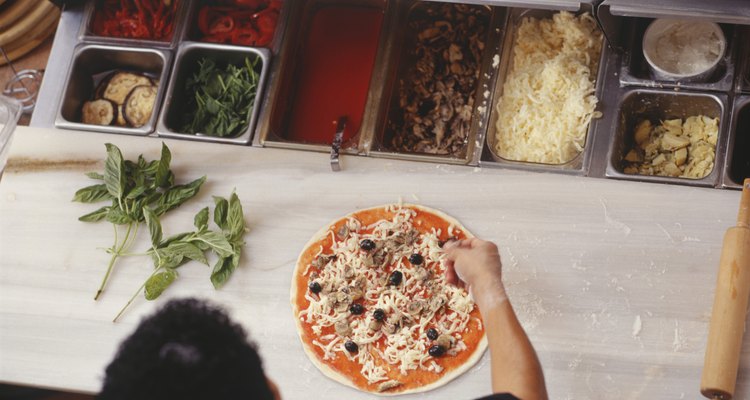
Steve Mason/Photodisc/Getty Images
The ideal post-workout meal contains a healthy balance of the three macronutrients: carbohydrates, protein and fat. Unlike a post-workout snack, which should be high in carbohydrates and protein, a post-workout meal can be a bit heartier. If you find yourself craving pizza for dinner after an afternoon run, make sure you choose pizza with high-quality ingredients.
Nutritional Profile
Pizza's nutritional profile varies based on the type of crust used, the amount of cheese and the types of toppings used. Toppings like sausage and pepperoni may be tasty, but they're also high in saturated fat and calories. For example, a pepperoni pizza at a restaurant may contain 280 calories, with 117 calories from fat. Veggie pizza, on the other hand, may have 220 calories, with only 72 calories from fat. Most pizzas also have a high protein and carbohydrate count, due to the crust and cheese.
Post-Workout Benefits
According to MayoClinic.com, the ideal post-workout meal combines meat, starch and cooked vegetables or a garden salad. Pizza combines all these elements and also provides protein and carbohydrates. For example, a serving of thin crust veggie pizza from a pizza restaurant provides 8 grams of protein and 5 grams of carbohydrate. Protein is a beneficial post-workout nutrient because it helps the muscles recover from strenuous activity. Carbohydrates replace lost glycogen, which is used during exercise to provide adequate energy.
Post-Workout Disadvantages
Although pizza contains beneficial nutrients for exercise recovery, it is often high in unhealthy saturated fat. Pizza toppings like cheese, bacon, hamburger, pepperoni and sausage are all high in saturated fat. According to the book "Nutrition" by Paul Insel et al., athletes should limit their daily saturated fat intake to 10 percent of their total calorie intake. One cheese personal pan pizza from a pizza restaurant may contain around 250 calories, which is over 10 percent for those on a 2,000-calorie diet.
Tips
If possible, make a homemade pizza or buy a healthy version made with whole-wheat crust, low-sodium sauce and mozzarella cheese. Replace pork and beef toppings with poultry such as chicken, ground turkey or chicken sausage. Use fresh herbs like basil, cilantro and parsley instead of high-sodium seasonings, and use fresh tomatoes instead of store-bought sauce, which tends to be high in sodium. If you don't have the time to make pizza yourself, choose thin-crust pizzas with healthy toppings, and combine pizza with a healthy side salad.
Related Articles
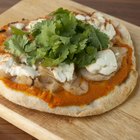
Is Whole-Wheat Pizza Healthy?

The Best Type of Pizzas to Eat

How to Cook a Frozen Pizza on the ...

Papa John's Nutrition Facts for Whole ...

How Many Calories Are in One Slice of ...

How to Grill With a Pizza Stone and ...
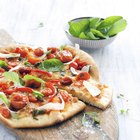
How to Make Flatbread Pizzas
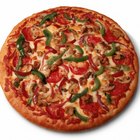
How to Make Fabulous Pizza on a Gas ...

How to Freeze an Unbaked Pizza Crust

Calories in the Subway 6 Inch Ham & ...
Homemade Pizza Sauce Recipe

How to Order Pizza on a Low Cholesterol ...
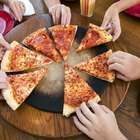
Sammy's Woodfired Pizza Nutrition ...

How to Bake With a Pizza Screen

How Long Can You Refrigerate Nacho ...
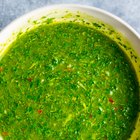
Add Flavor to Foods With This ...

How Long to Bake a Pizza With Lots of ...

How to Make Bread Sticks Out of Pizza ...

How to Make Homemade Pizza Without Yeast

Calories in a Subway Cheese Pizza
References
Writer Bio
Nicole Crawford is a NASM-certified personal trainer, doula and pre/post-natal fitness specialist. She is studying to be a nutrition coach and RYT 200 yoga teacher. Nicole contributes regularly at Breaking Muscle and has also written for "Paleo Magazine," The Bump and Fit Bottomed Mamas.
Photo Credits
Steve Mason/Photodisc/Getty Images